GeckPhotographer
Very Well-Known Member
So it's winter. I hate winter. It's cold, wet, bleak and worst of all, all of the reptiles around me become inactive.
Fortunately over the past couple weeks I managed to escape some of winter. These are some finds from the Simpson Desert of far western Qld.
Disclaimer: It is is illegal to handle native wildlife without a permit. This thread shows one native mammal being held. This individual is being held not by me, but by someone holding the appropriate permits for scientific reasons.
I don't know how many of you have driven from Sydney to the Simpson Desert before, but let me tell you it's not a short drive. And at this time of the year it's not a particularly interesting one either. The only reptile found on the trip up was this Common Dwarf Skink.
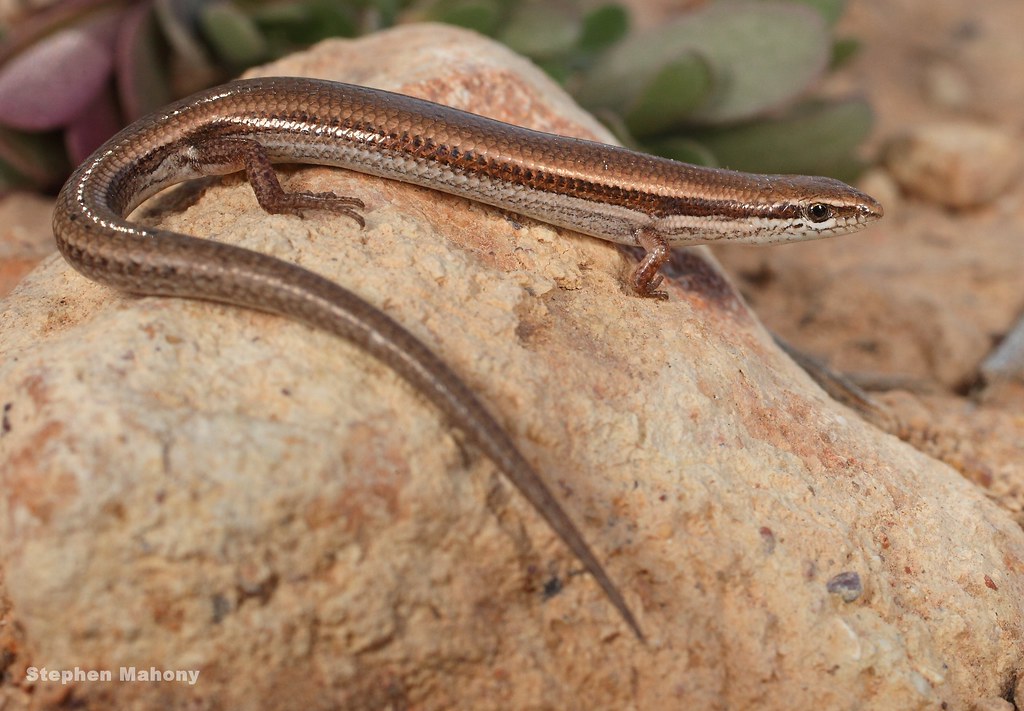
Menetia greyii by Stephen Mahony, on Flickr
After arriving in the Desert and setting up camp things began to improve. Day time temperatures were in the mid 30Cs with nights being a pleasant 10-15C. This led to plenty of day time reptile activity with Central Military Dragons being the most common reptiles around.
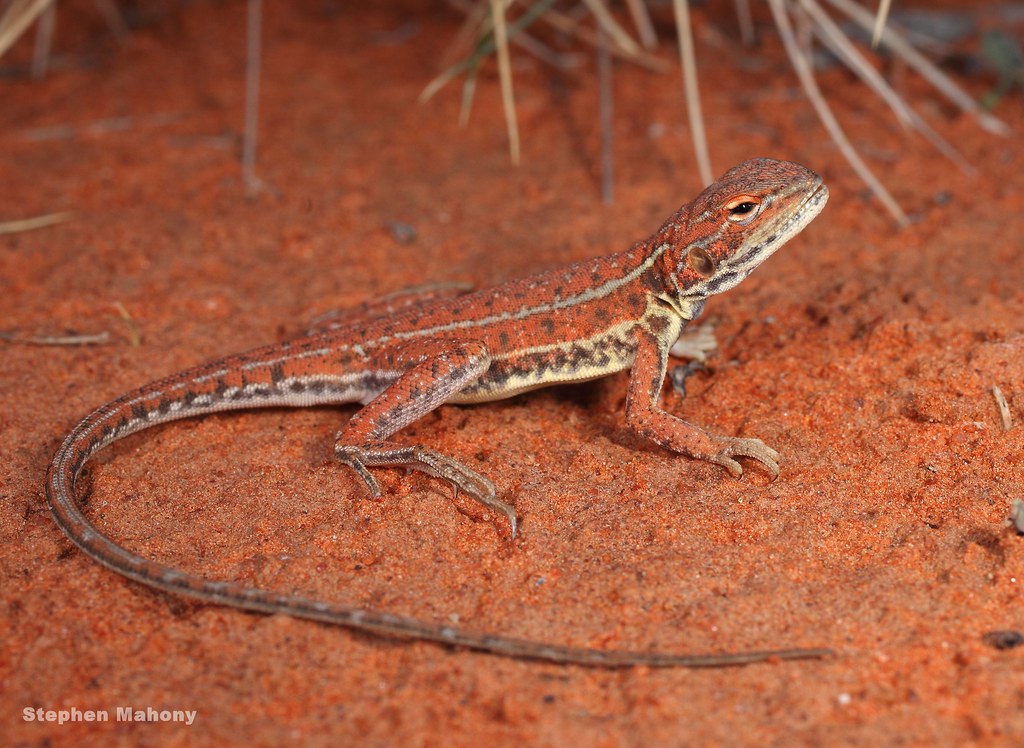
Ctenophorus isolepis by Stephen Mahony, on Flickr
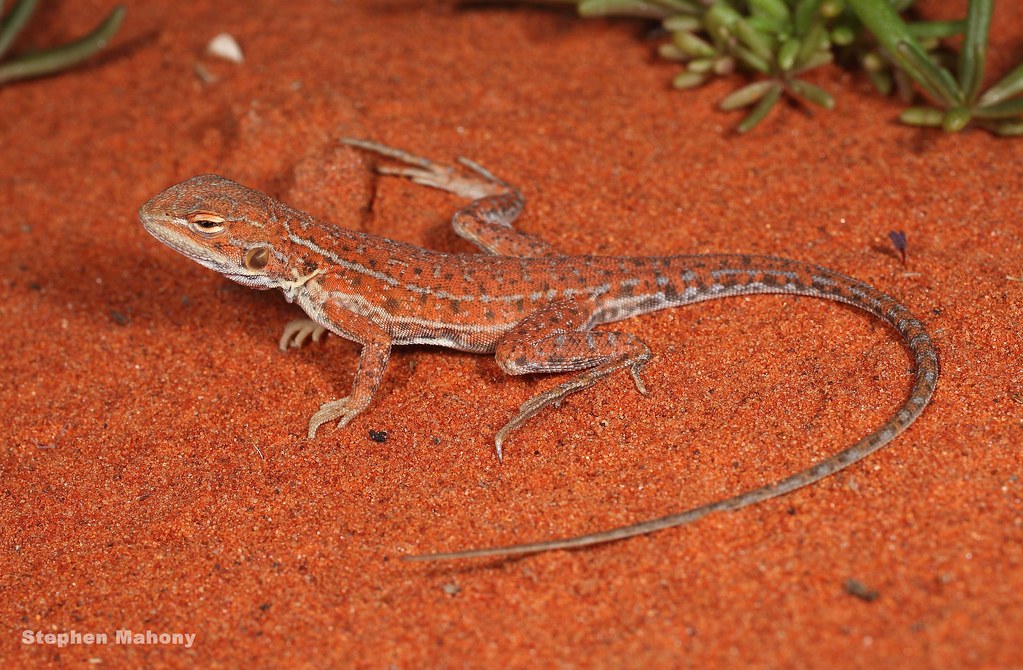
Ctenophorus isolepis by Stephen Mahony, on Flickr
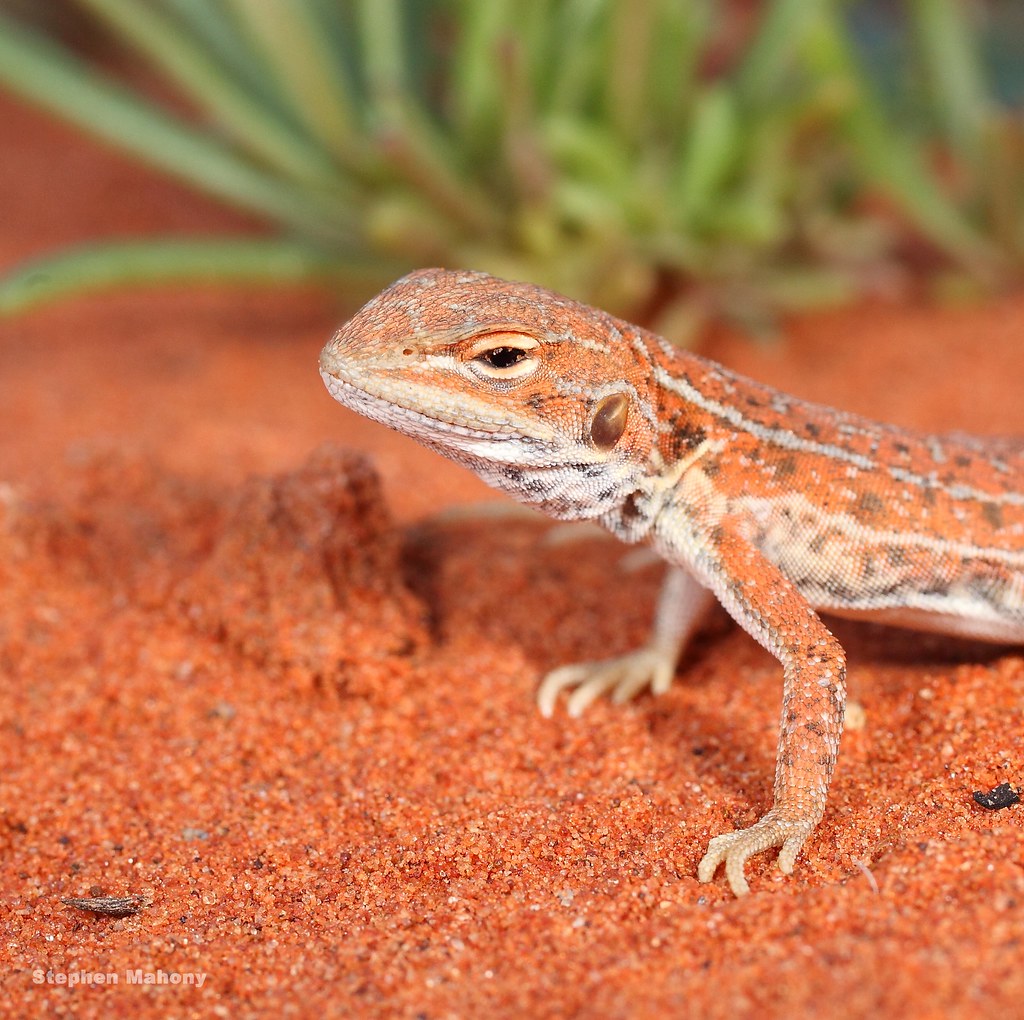
Ctenophorus isolepis by Stephen Mahony, on Flickr
Another common reptile around the dunes was the Leopard Ctenotus, an attractive but fairly fast larger skink which are quite attractive.

Ctenotus pantherinus by Stephen Mahony, on Flickr

Ctenotus pantherinus by Stephen Mahony, on Flickr
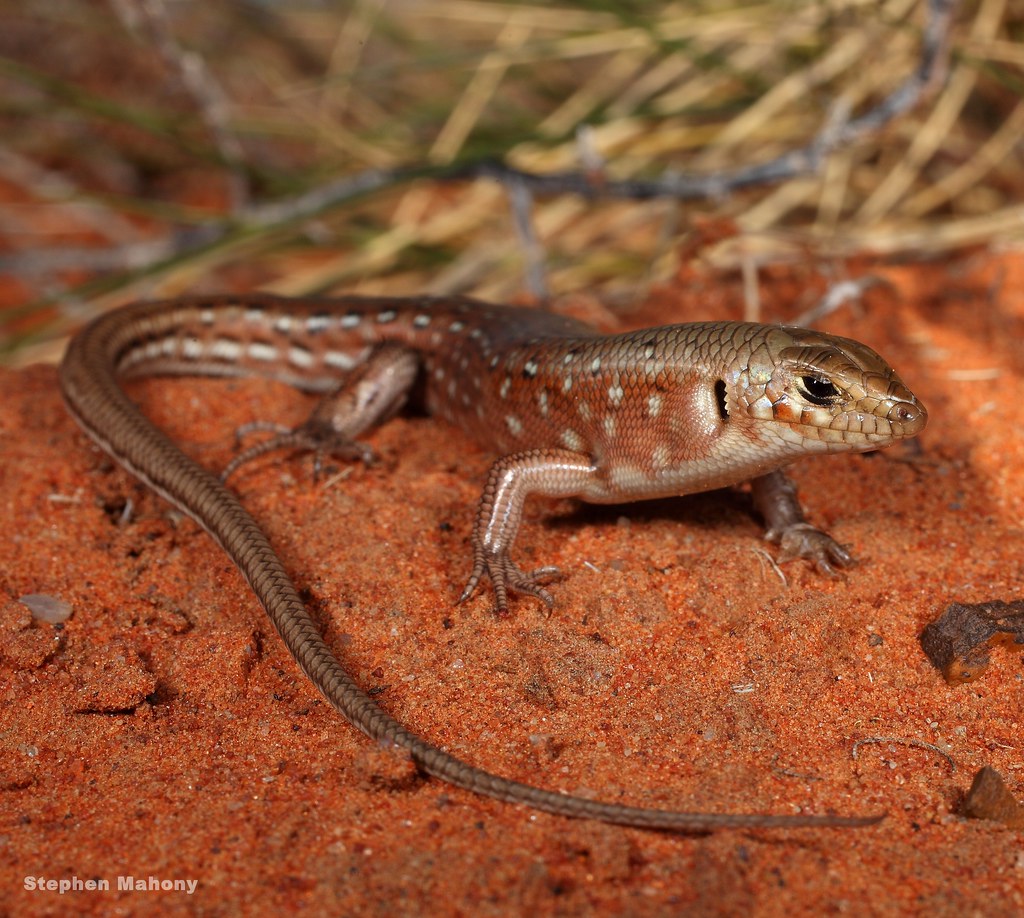
Ctenotus pantherinus by Stephen Mahony, on Flickr
Poking around didn't take too long to turn up one of these sand-swimming skinks, which were common in many habitats we looked at.
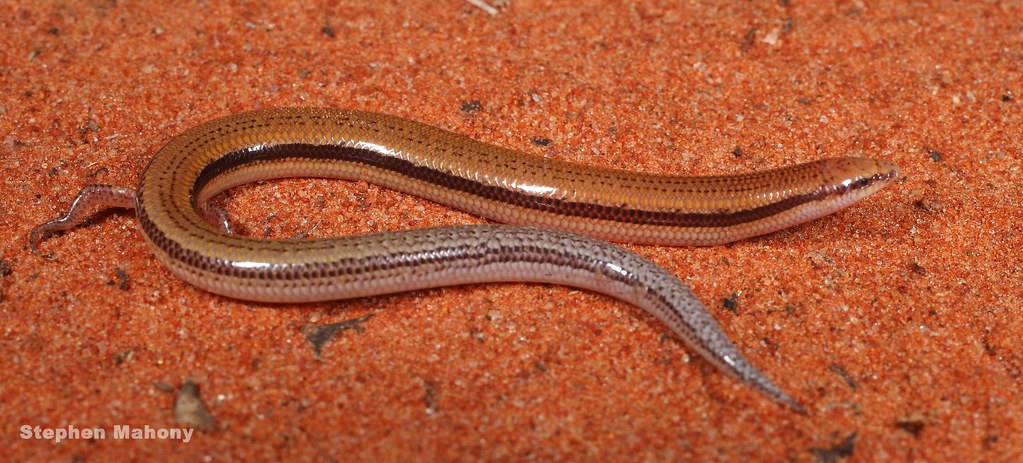
Lerista labialis by Stephen Mahony, on Flickr
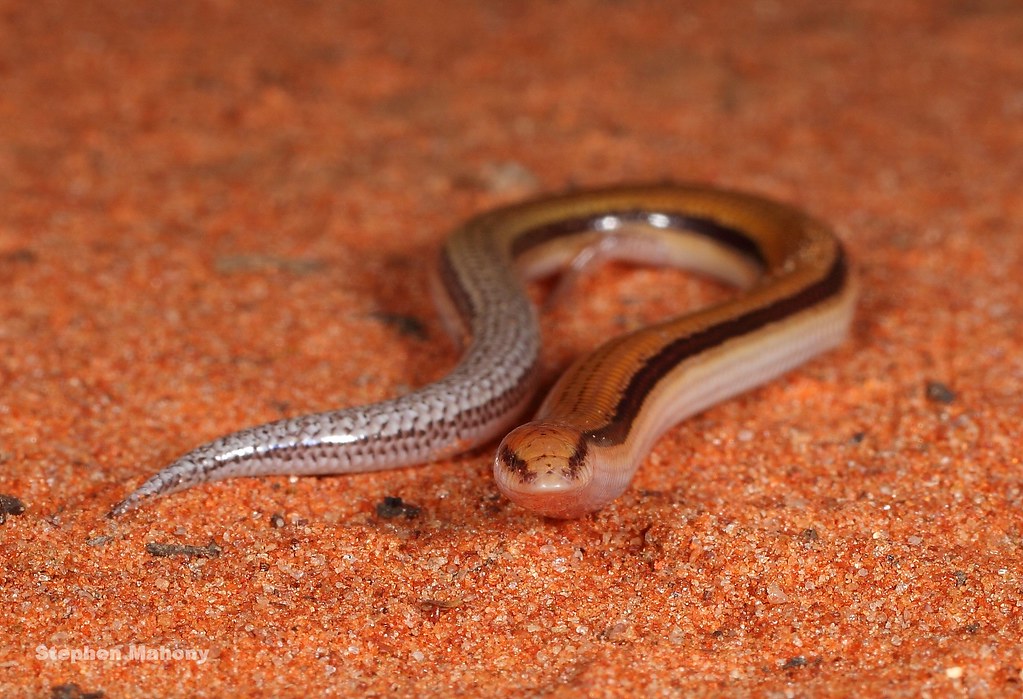
Lerista labialis by Stephen Mahony, on Flickr
After the first day I was pretty happy with the reptiles we had managed to see, and keen to head out for dusk to check whether I might be equally lucky with geckos. While the night was warm enough to walk around without a jumper, there was no gecko activity. In fact the first 3 nights passed without a single gecko of any kind.
The next day followed the trend of little interesting finds. The other group managed to see a Moloch which I missed out on as well as some interesting skinks. My group turned up a scorpion.

Lychas Scorpion by Stephen Mahony, on Flickr
Fortunately after that un-eventful night the next day began to produce some more reptiles again.
Narrow-lined Ctenotus were seen in only small numbers, unfortunate seeing as how attractive they were.

Ctenotus dux by Stephen Mahony, on Flickr
Ctenophorus nuchalis started emerging in the heat of the day to sit outside of their burrows, the temps weren't feeling much like winter at all.
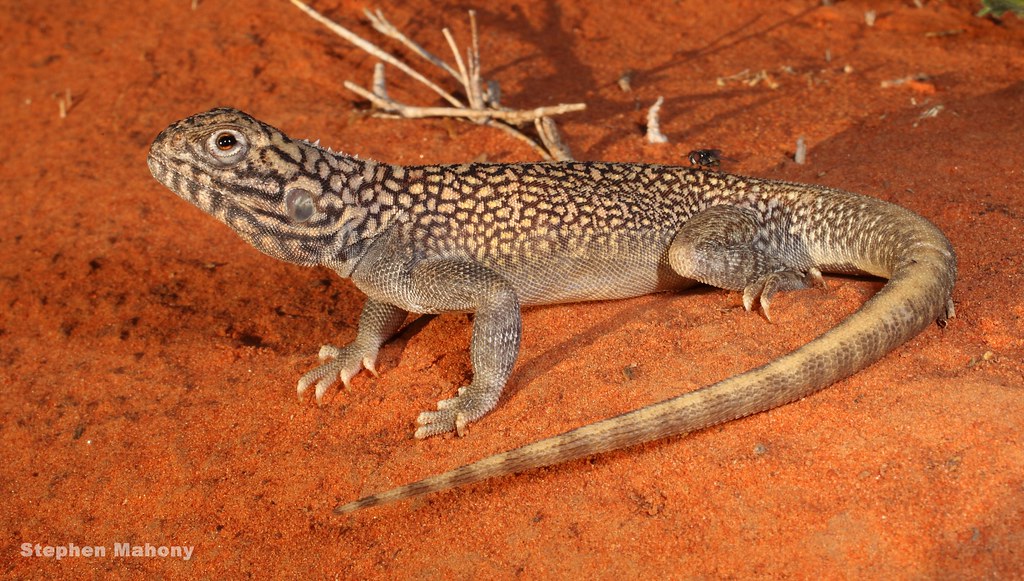
Ctenophorus nuchalis by Stephen Mahony, on Flickr
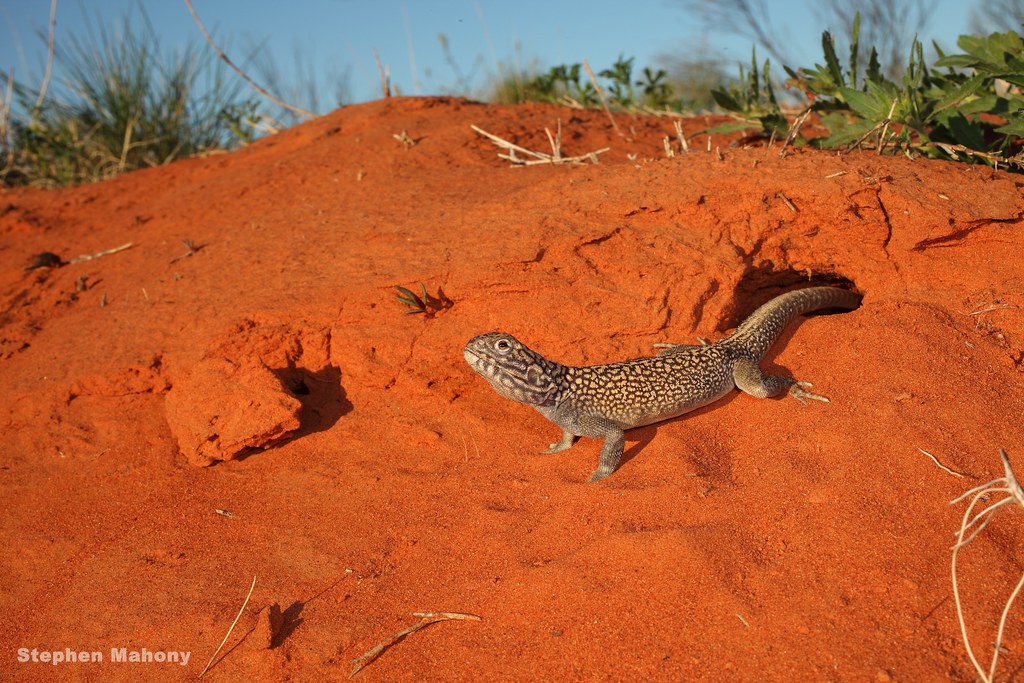
Ctenophorus nuchalis by Stephen Mahony, on Flickr
The next day was less productive, but still yielded one reptile I had been very keen to see for a while now, the Canegrass Dragon.
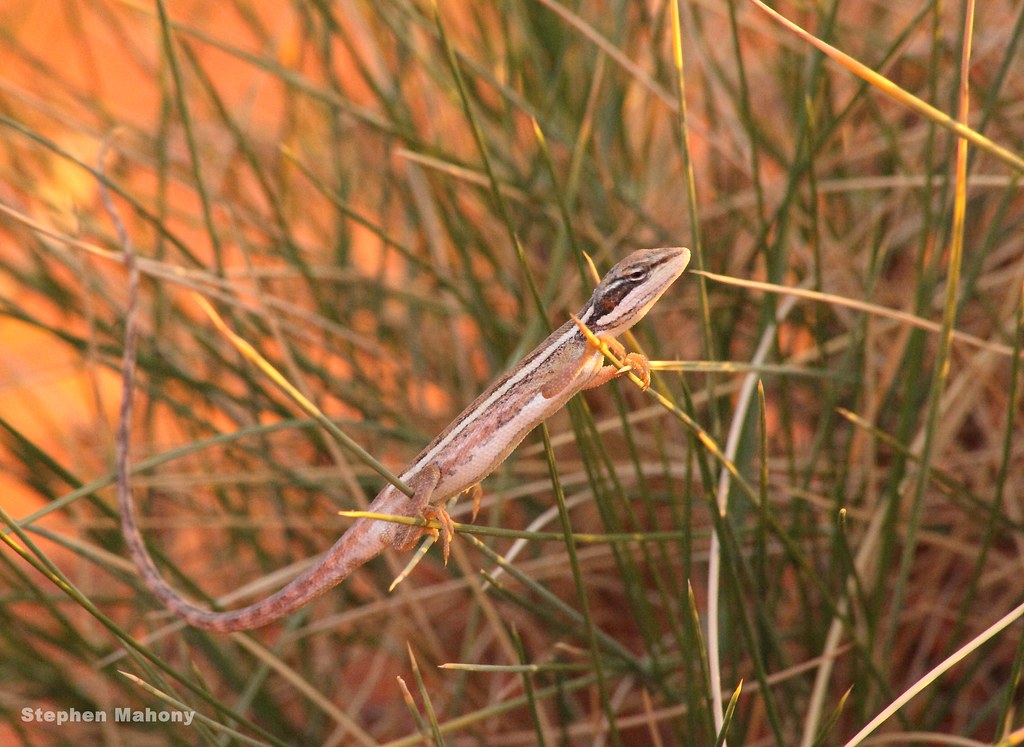
Diporiphora winnekei by Stephen Mahony, on Flickr
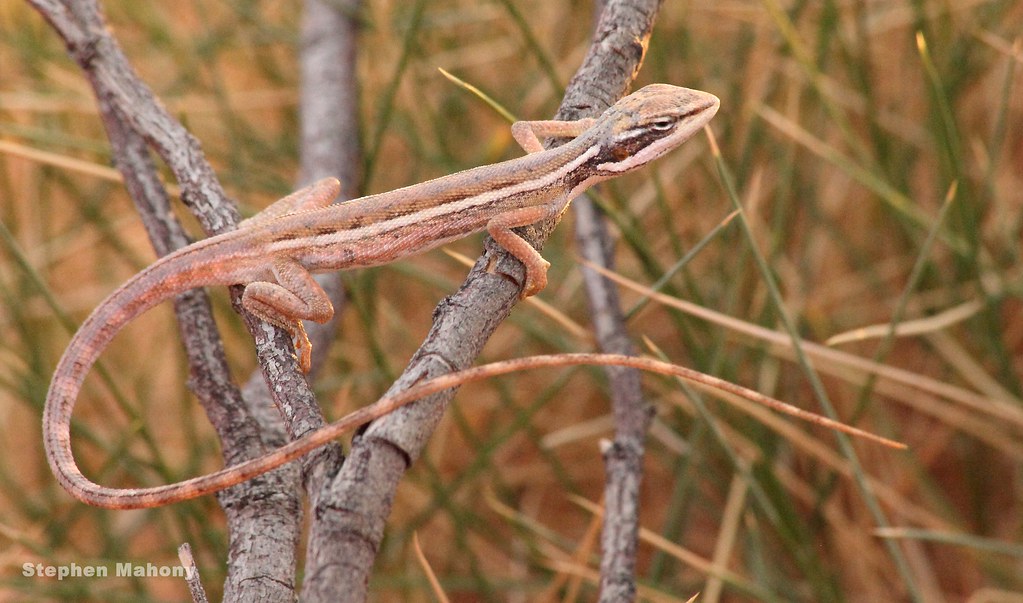
Diporiphora winnekei by Stephen Mahony, on Flickr
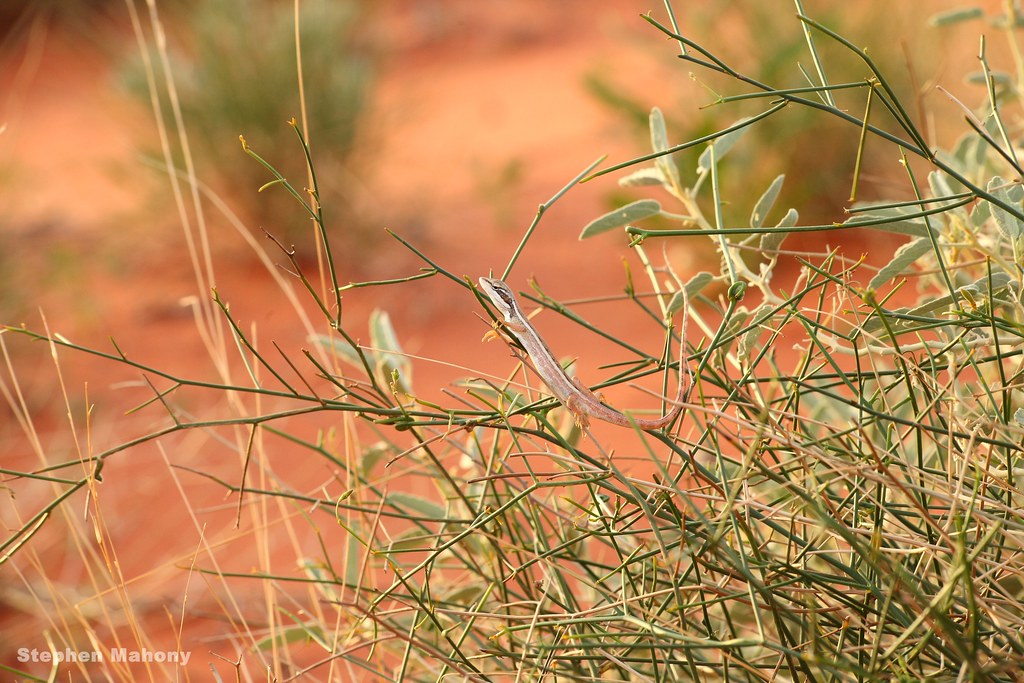
Diporiphora winnekei by Stephen Mahony, on Flickr
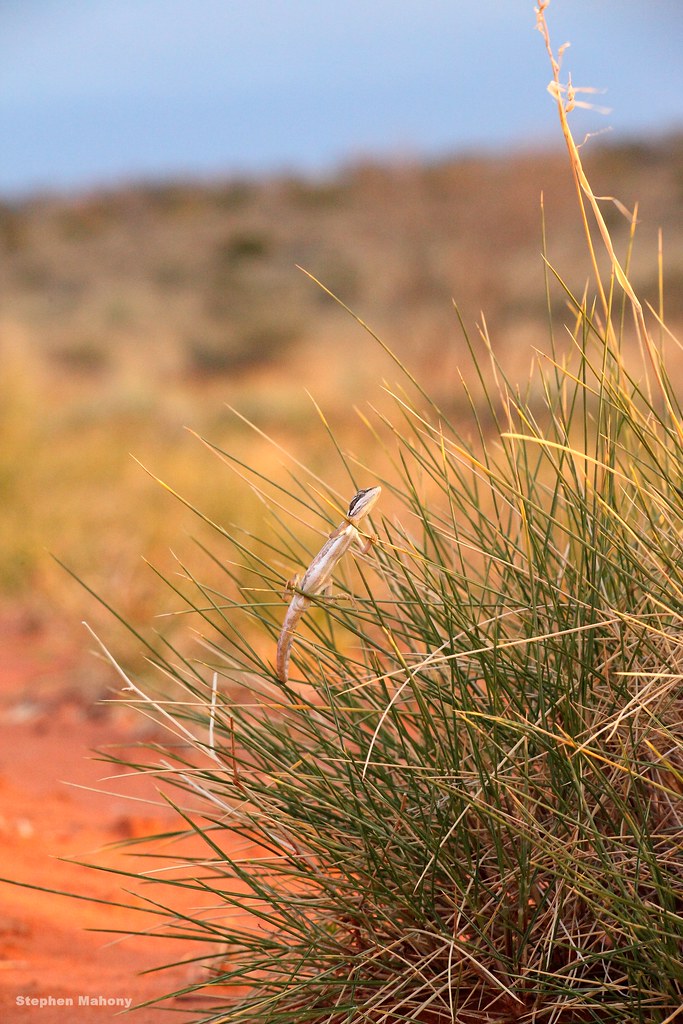
Diporiphora winnekei by Stephen Mahony, on Flickr
Finally after 3 nights of nothing I broke the streak and managed to find a single gecko on the dunes at night.
I had seen Northern Spiny-tails before, but always find them quite attractive.

Strophurus ciliaris by Stephen Mahony, on Flickr
While the next few days were uninteresting for reptiles the next 2 nights started producing geckos.
Beaked Geckos were easily the most common species running around the lower dunes. They are usually pretty hard to photograph, but I feel I finally got one pic to be happy with.
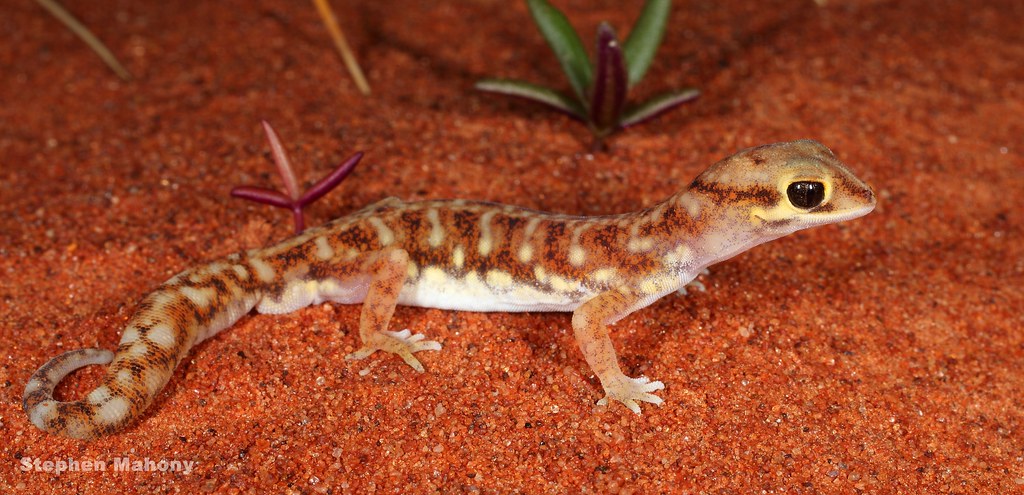
Rhynchoedura eyrensis by Stephen Mahony, on Flickr
Bynoe's Geckos were also around if one inspected areas with plenty of fallen wood or junk. They were a nice shade of red compared to other parts of their range.
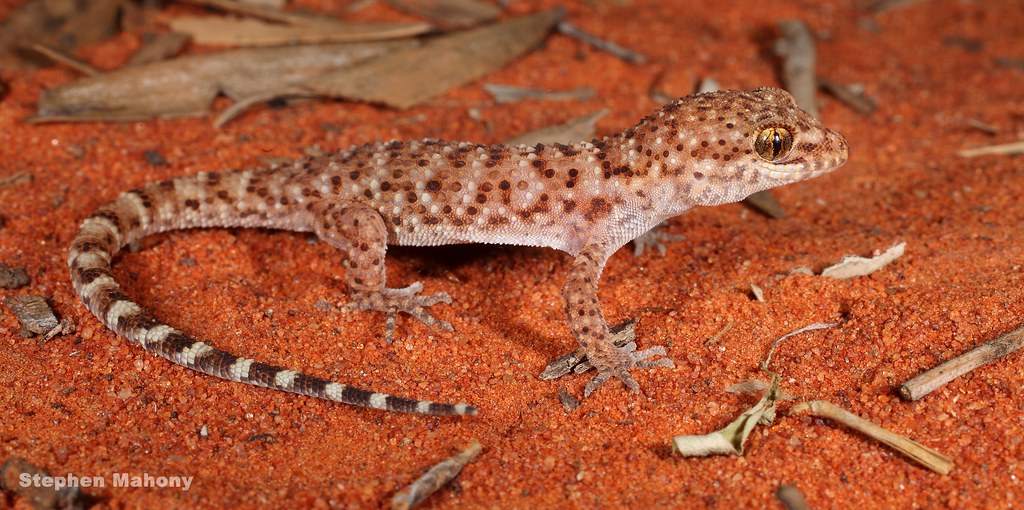
Heteronotia binoei by Stephen Mahony, on Flickr
Ironically the gecko I encountered least commonly was the Variegated Dtella, usually the most common species in most places. They were still around and the first I found I optimistically thought might have been a Gehyra purpurascens, but no luck.
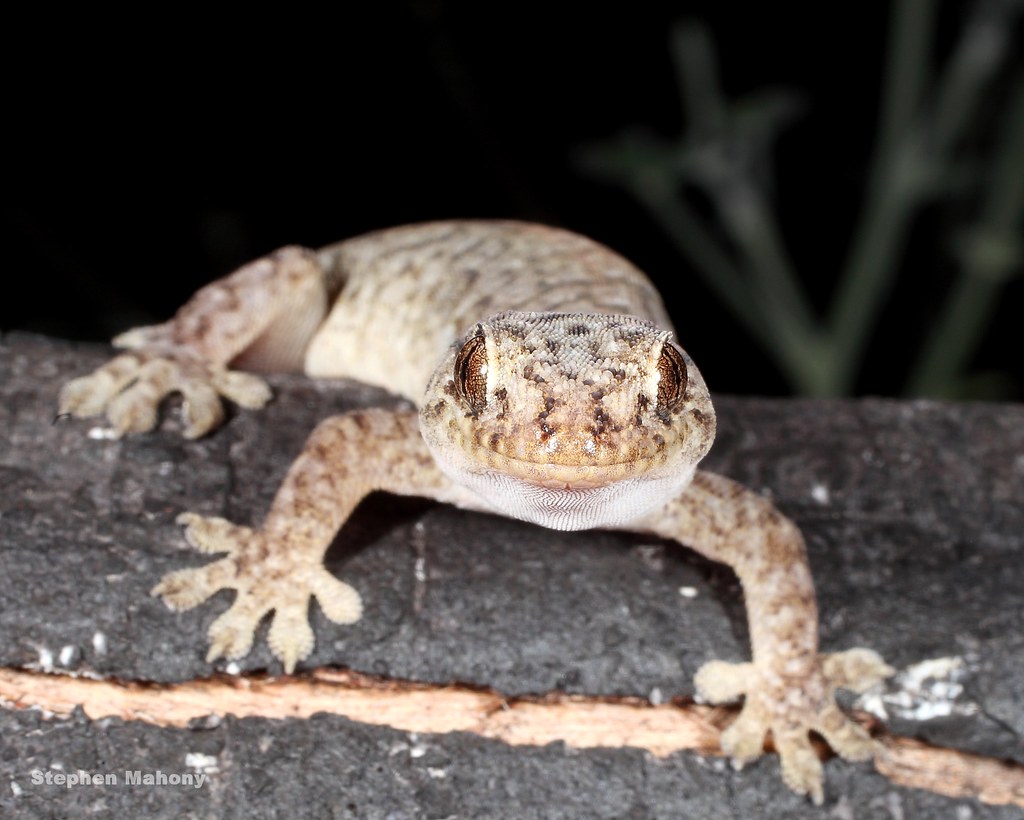
Gehyra variegata by Stephen Mahony, on Flickr
The best gecko over these few nights was the Sand-plain Gecko, the only new gecko for me on the trip, and one I've wanted to see for a fairly long time which has always avoided me.
First came a little bub.
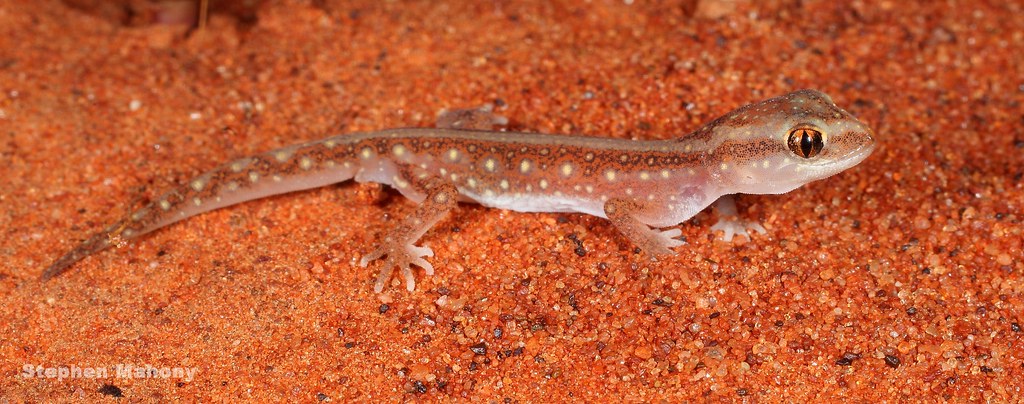
Lucasium stenodactylum by Stephen Mahony, on Flickr
Then and adult.
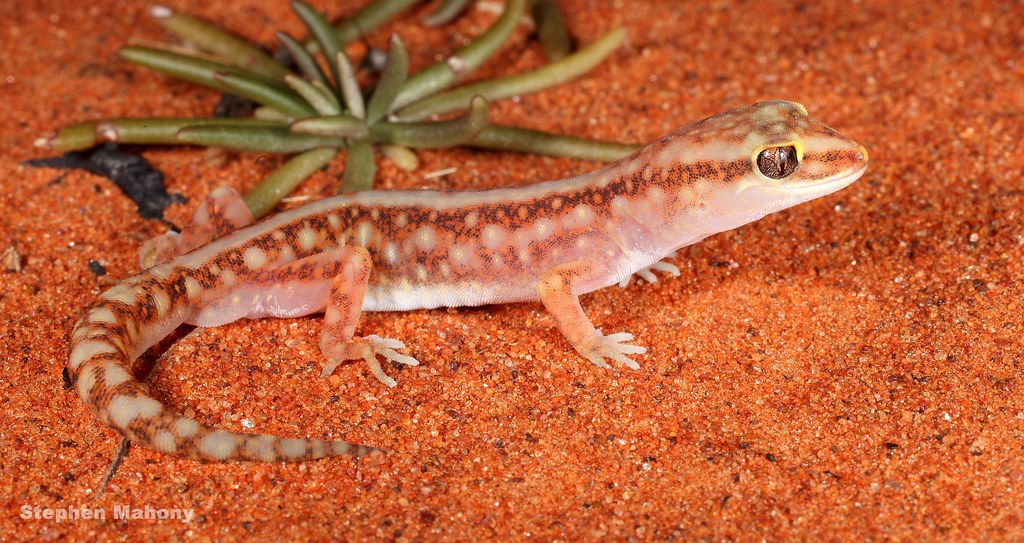
Lucasium stenodactylum by Stephen Mahony, on Flickr
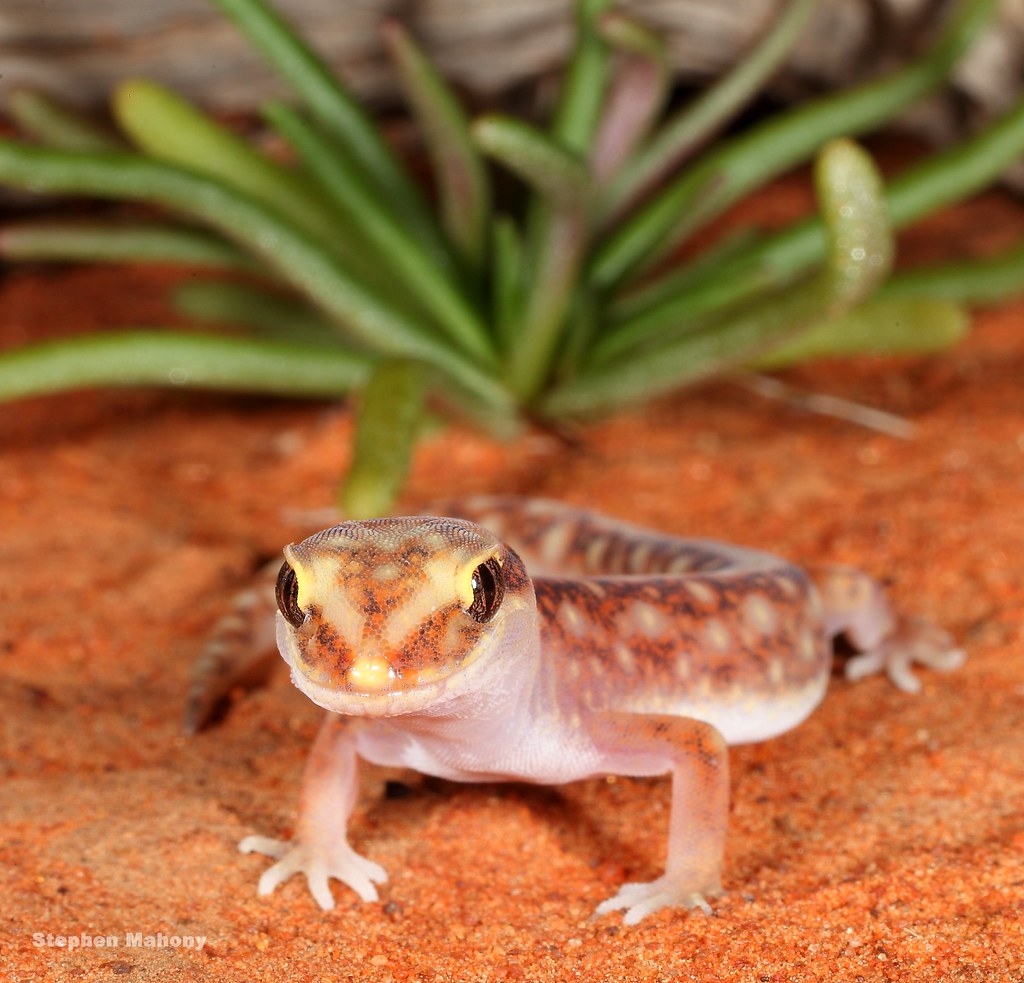
Lucasium stenodactylum by Stephen Mahony, on Flickr
The next day was the best of the trip, first off a Mulgara was caught in a pit trap by some of the researchers and we got to see it. This was my favourite animal of the whole trip.
For those truly reptile-centrics my excitement at this may seem 'odd'. Mulgara (this being the Brush-tailed, one of 2 species) are carnivorous marsupials of the Dasyurid family. Within the family only Quolls and Tassie Devils are larger, both of which have quite different morphology to the main radiation of Dasyurids which are generally a lot smaller. So the Mulgara is effectively the largest Dasyurid predator within the radiation of conservative morphology!
^ The above was mumbo jumbo? They are super freaking cute little wrecking balls that will take on anything!!!
Being held by one of the researchers.

Dasycercus blythi_017 by Stephen Mahony, on Flickr
It didn't sit still when released.

Dasycercus blythi_044 by Stephen Mahony, on Flickr
Not long after this Mulgara I went to sit under a shady tree and drink some water. After a couple minutes I realized this little guy was staring at me.
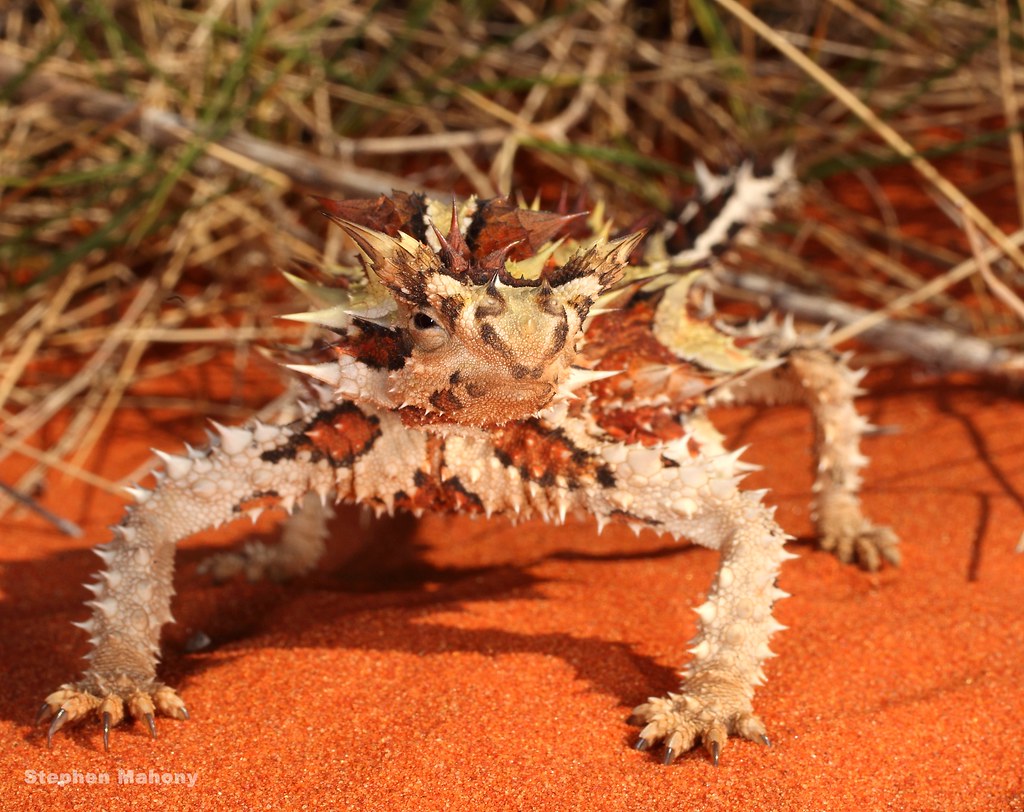
Moloch horridus by Stephen Mahony, on Flickr
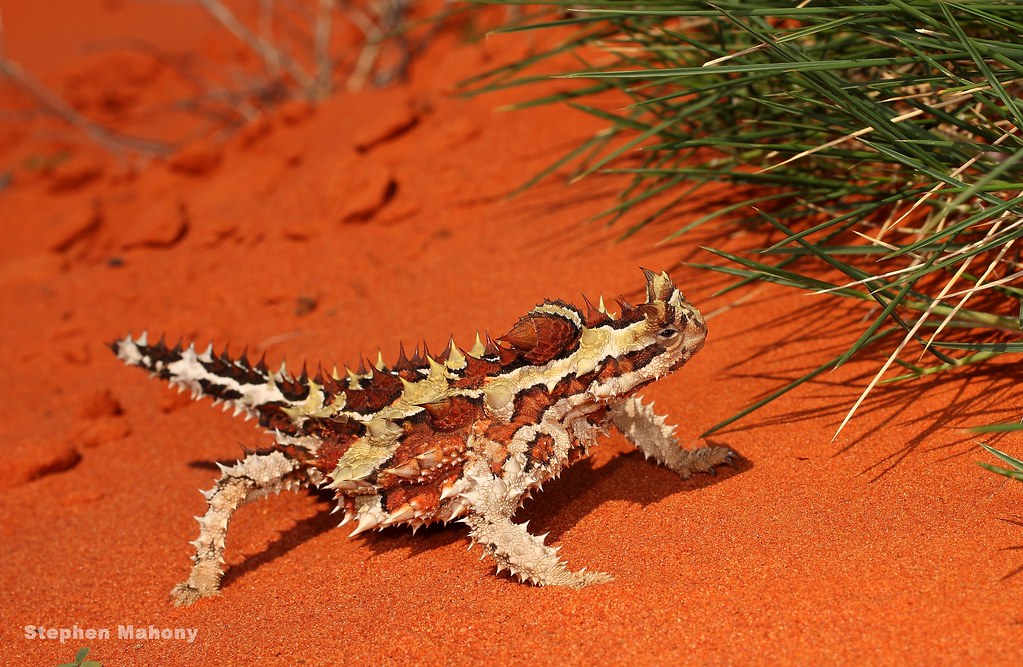
Moloch horridus by Stephen Mahony, on Flickr
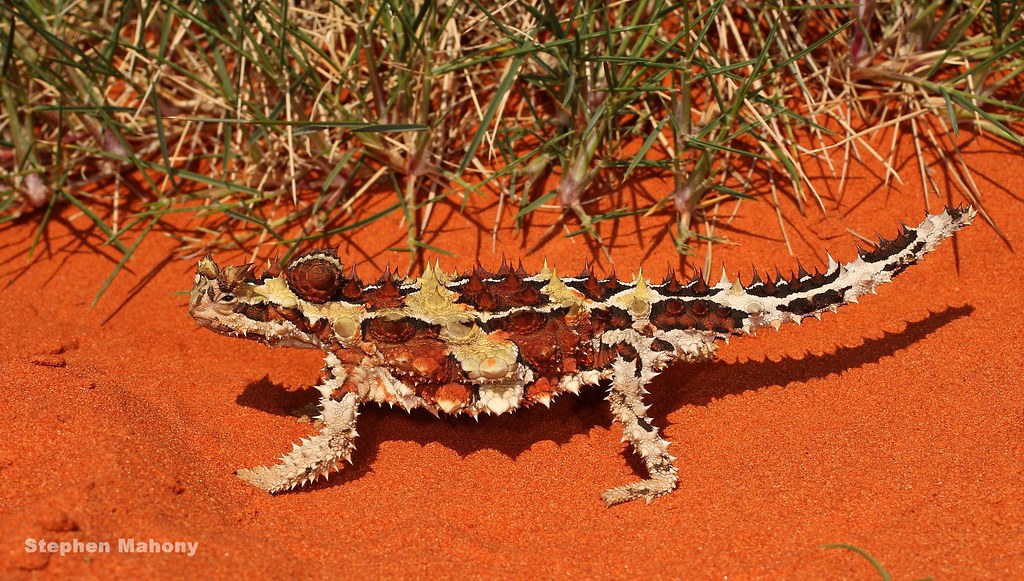
Moloch horridus by Stephen Mahony, on Flickr
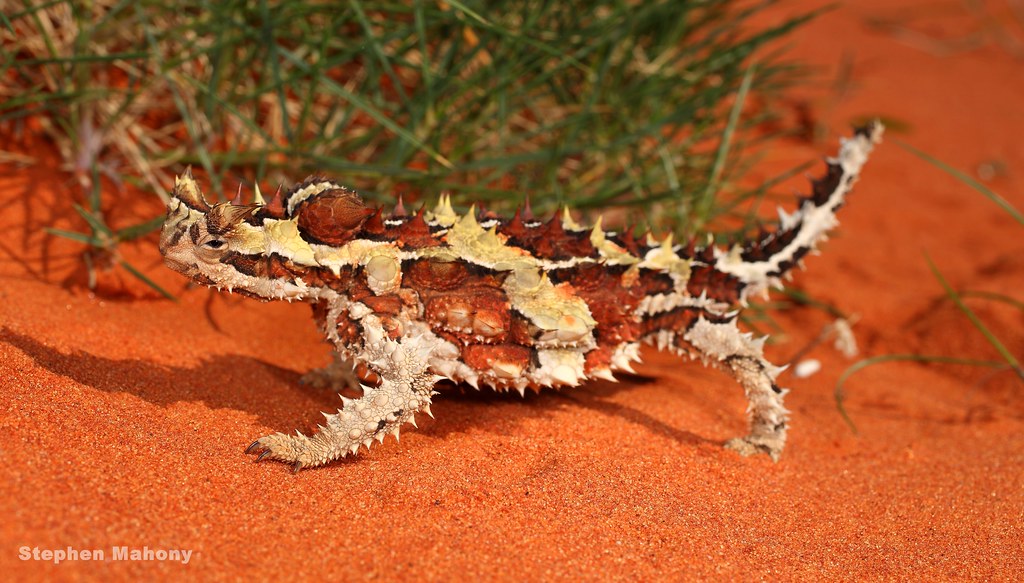
Moloch horridus by Stephen Mahony, on Flickr
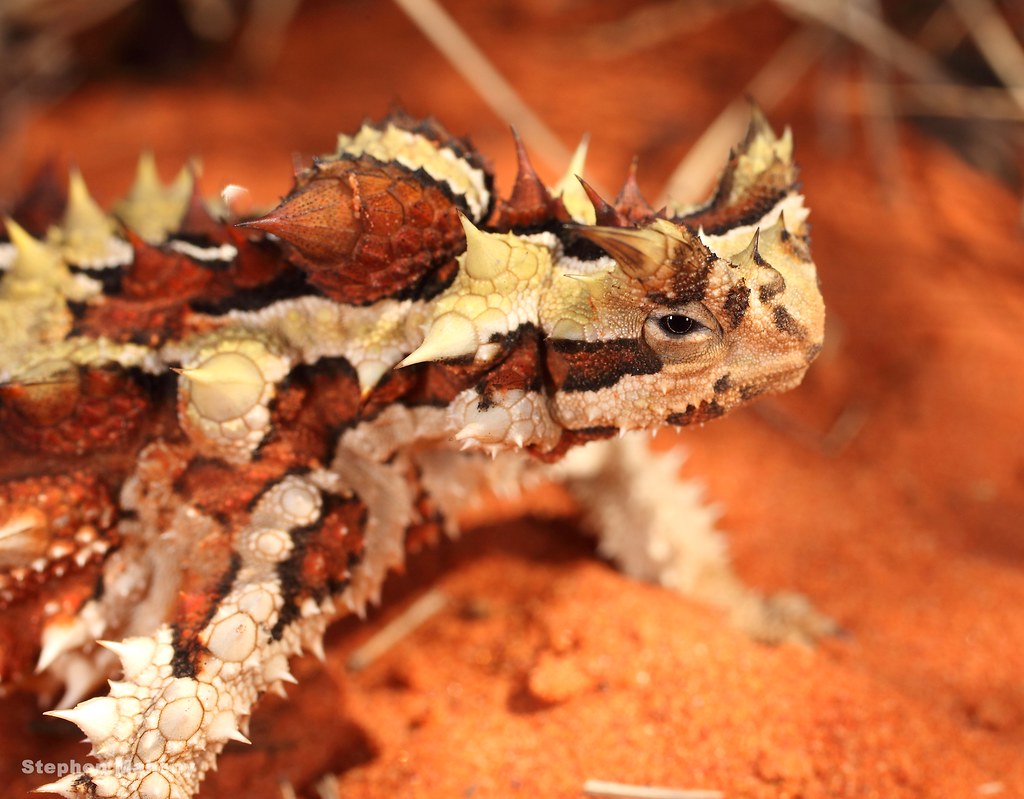
Moloch horridus by Stephen Mahony, on Flickr
After this day the trip began to wind up a fair bit. One day was spent driving into the Northern Territory and we managed to find a Gibber Earless Dragon.
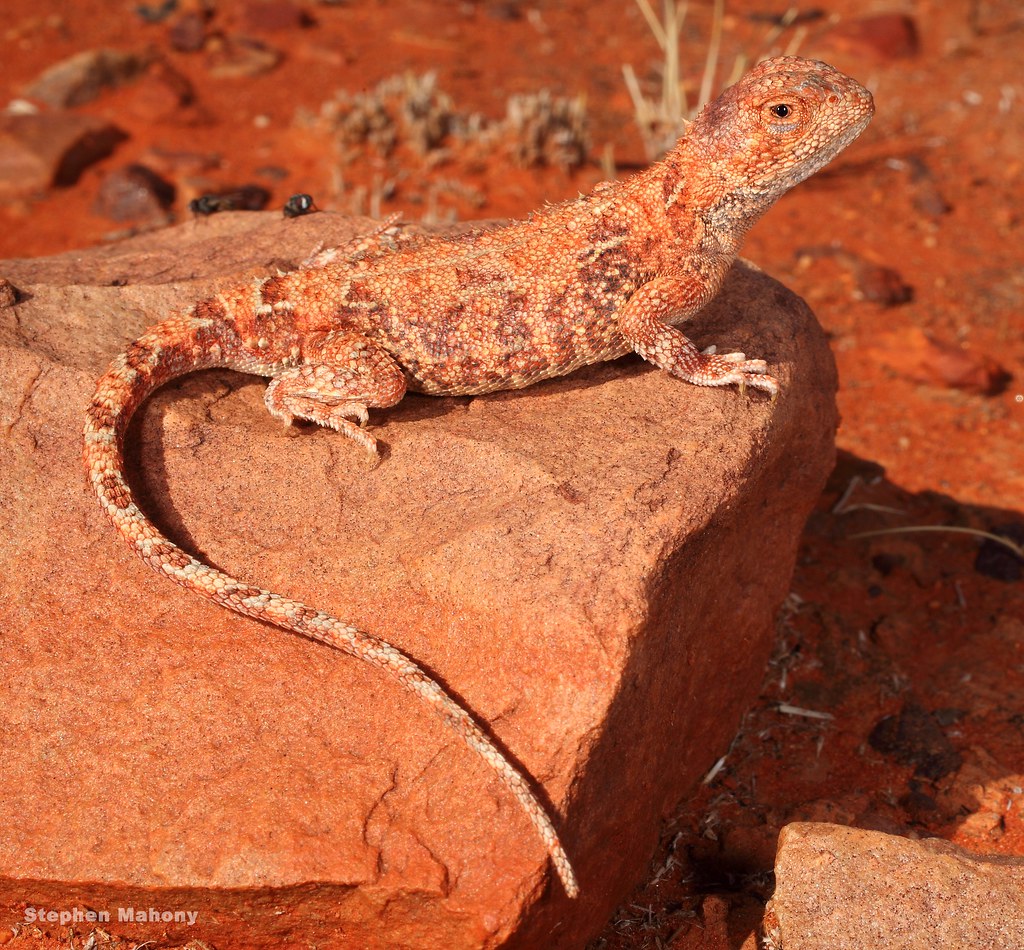
Tympanocryptis intima by Stephen Mahony, on Flickr
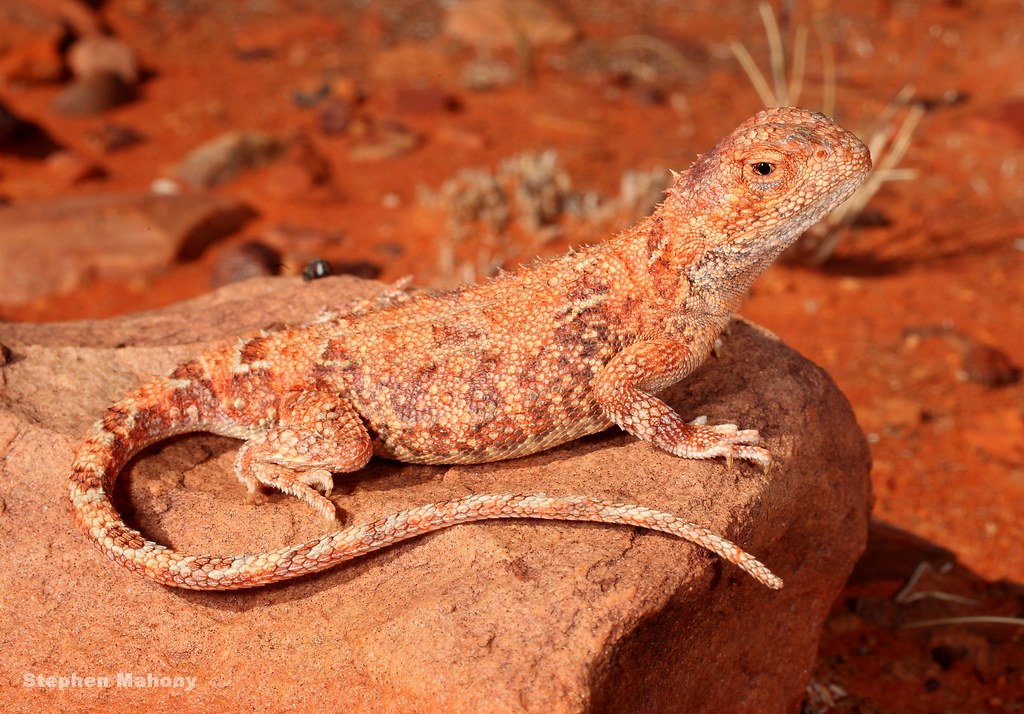
Tympanocryptis intima by Stephen Mahony, on Flickr
But after this most of the animals that turned up I had already photographed earlier on the trip, and it wasn't long before it came to an end and we headed home.
That's the end of the reptiles but here's some scenery.
View from my tent.
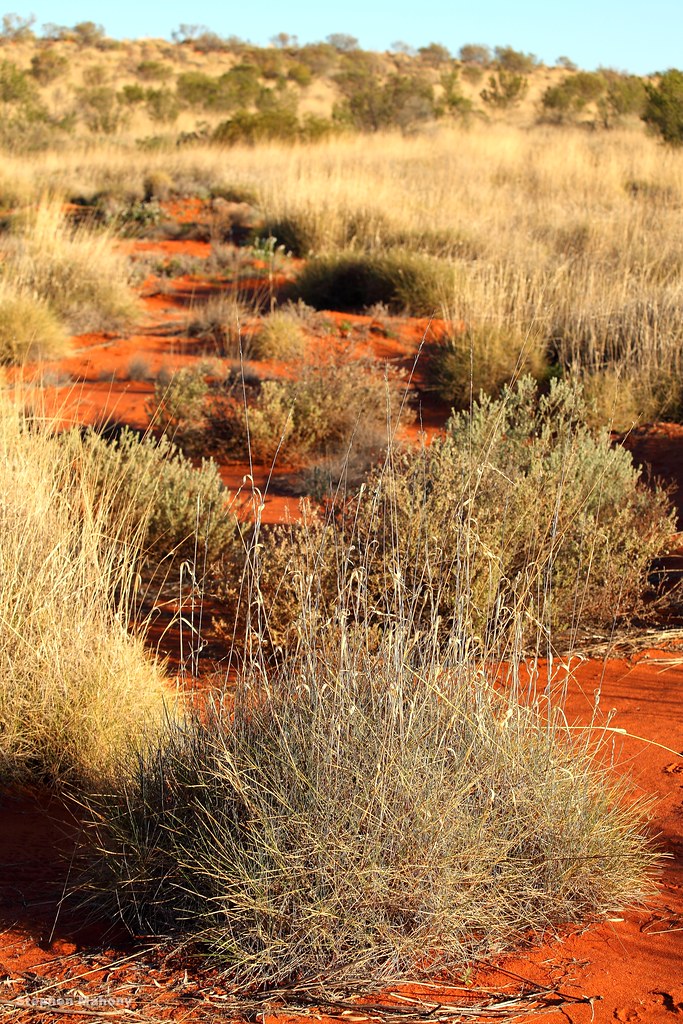
Spinifex Plain by Stephen Mahony, on Flickr
A Gidgee Swail from on top of the dune.

Gidgee Swail by Stephen Mahony, on Flickr
One of many sand dunes.
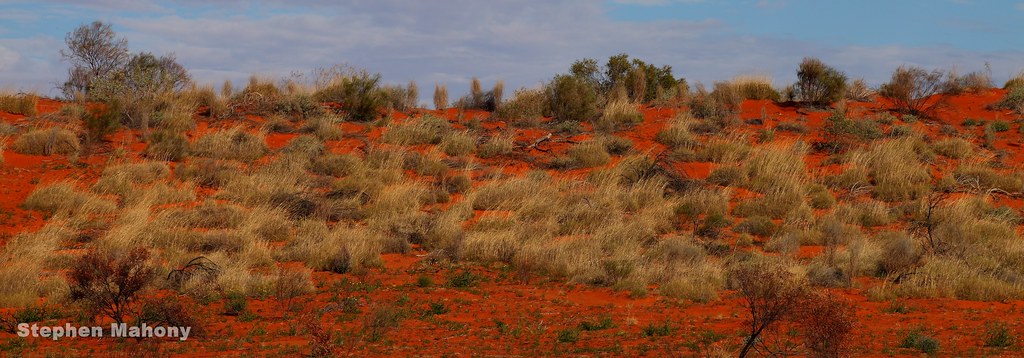
Sand Dune by Stephen Mahony, on Flickr
From the top of a dune.
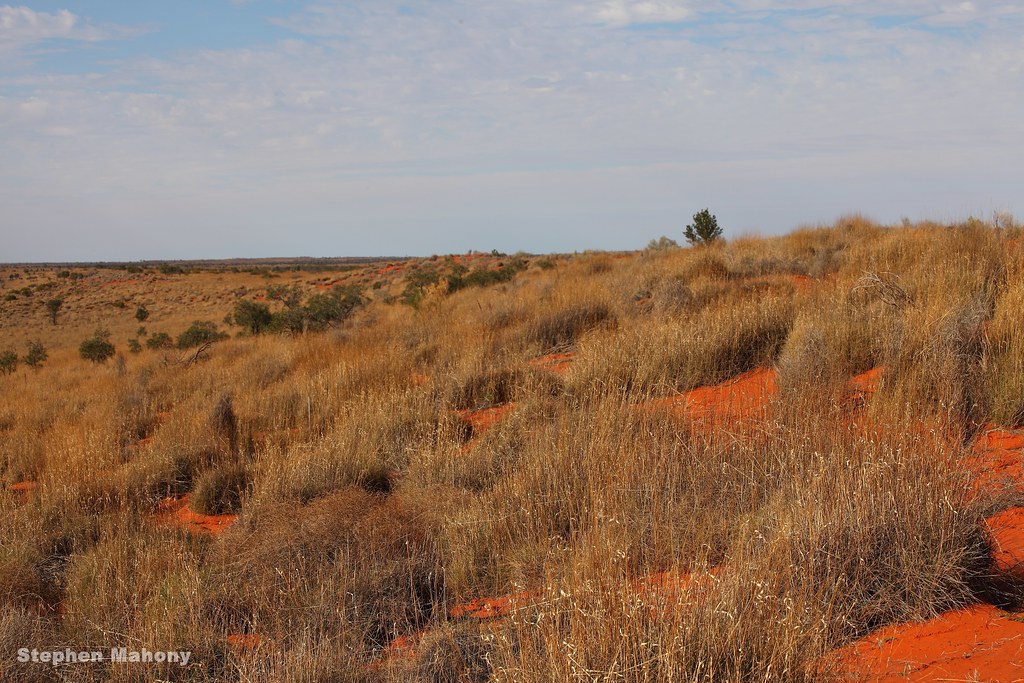
Dune Top by Stephen Mahony, on Flickr
A swail with hard rocky ground and Gidgee
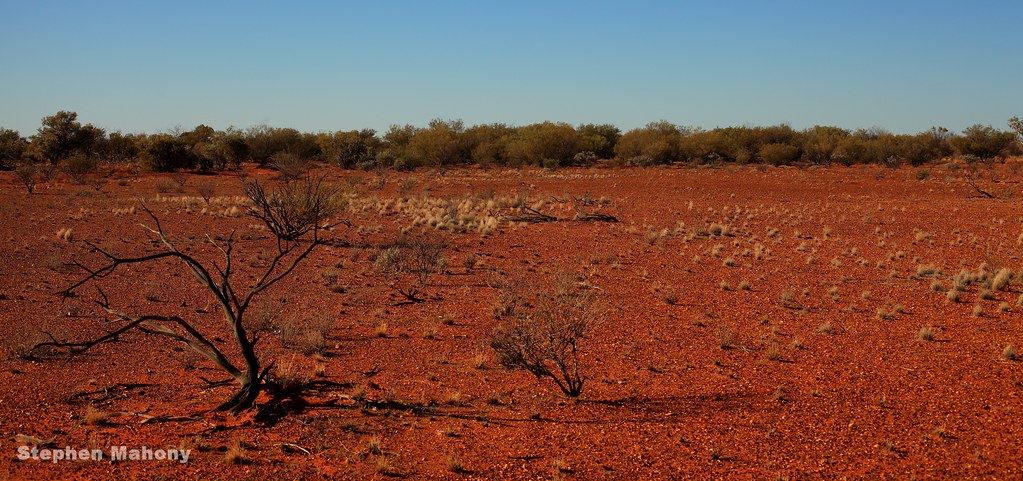
Stony Gidgee Stand by Stephen Mahony, on Flickr
Spinifex Plain in the swail.
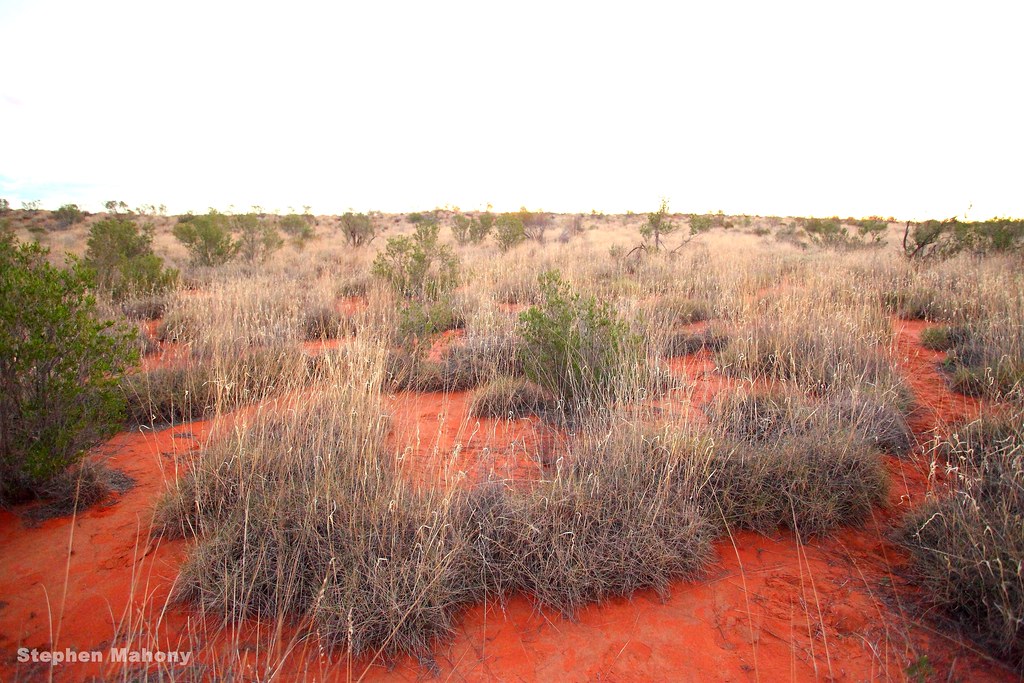
Spinifex Plain by Stephen Mahony, on Flickr
A swail with mixed Gidgee and Spinifex.
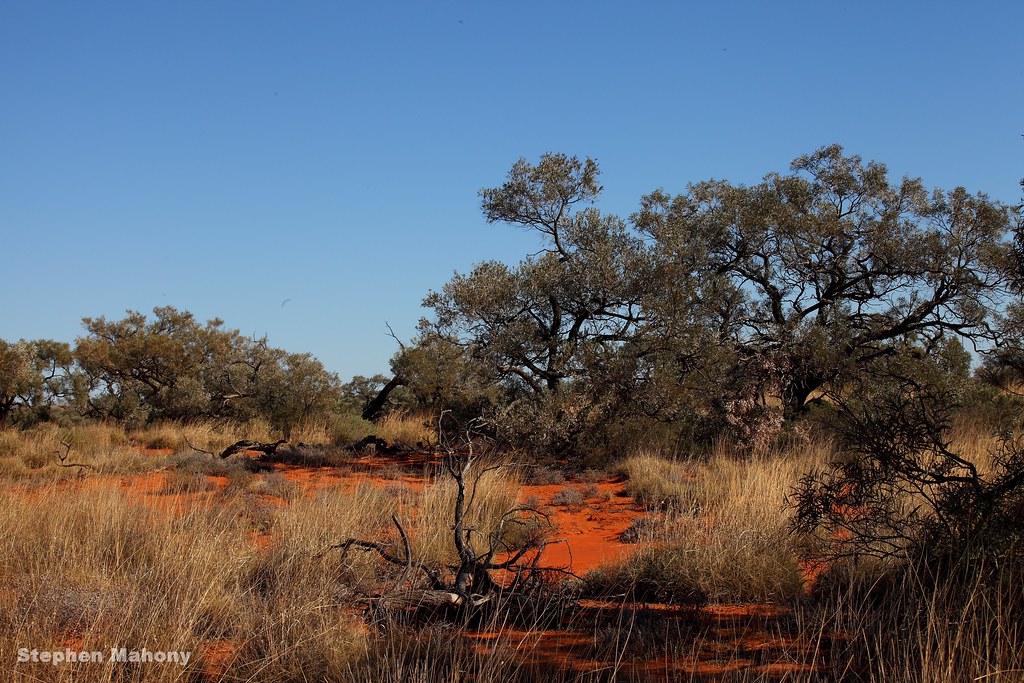
Gidgee and Spinifex Swail by Stephen Mahony, on Flickr
Sunset

Sunset on the Simpson by Stephen Mahony, on Flickr
Plants
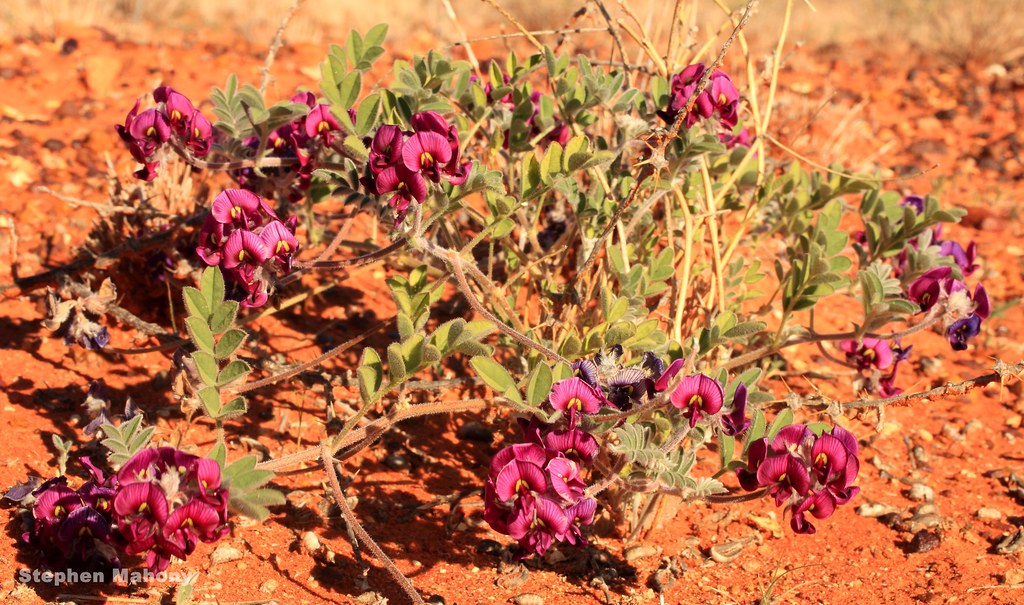
Purple Pea by Stephen Mahony, on Flickr
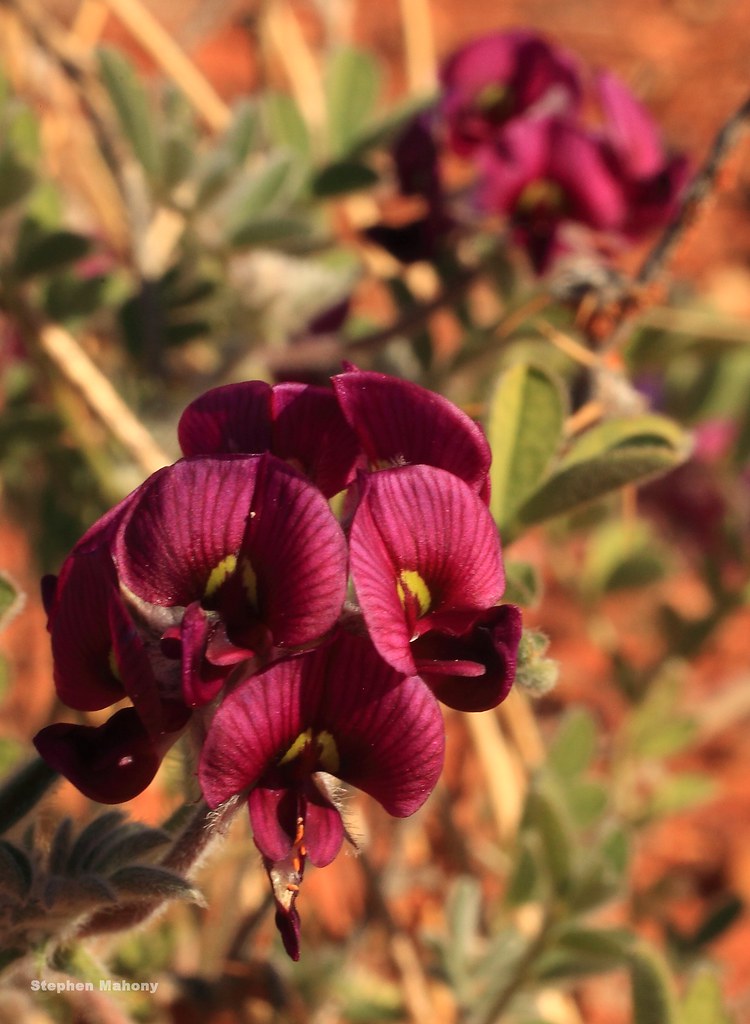
Purple Pea by Stephen Mahony, on Flickr
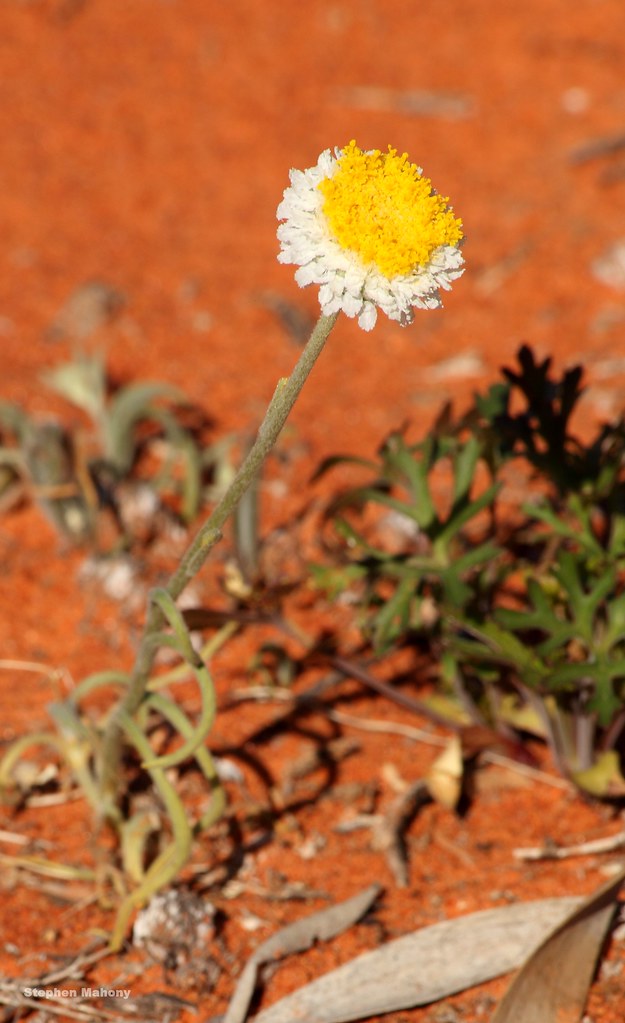
Fried Egg Daisy by Stephen Mahony, on Flickr
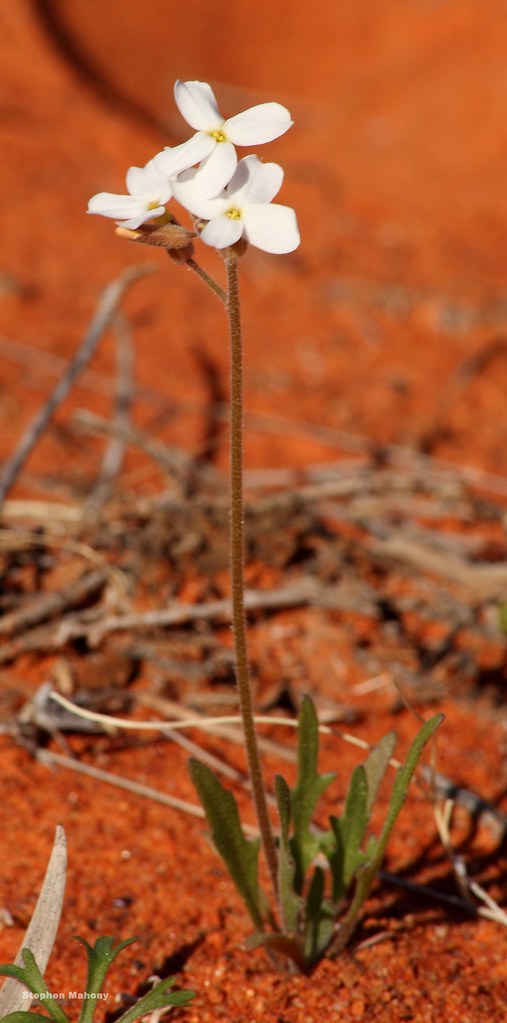
Little White Flower by Stephen Mahony, on Flickr
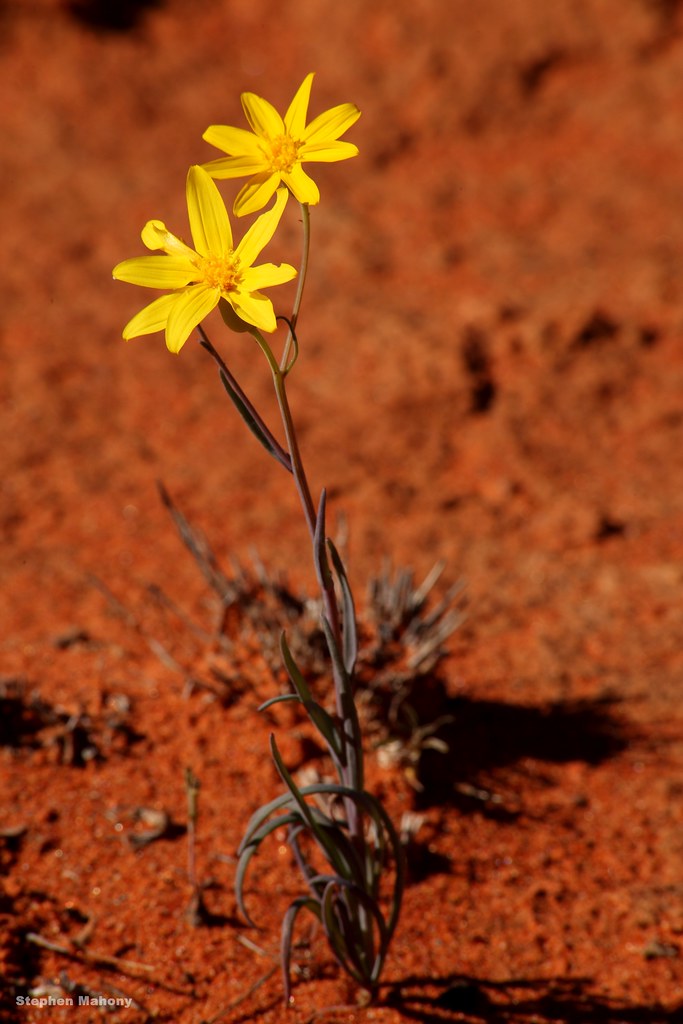
Yellow Flower by Stephen Mahony, on Flickr
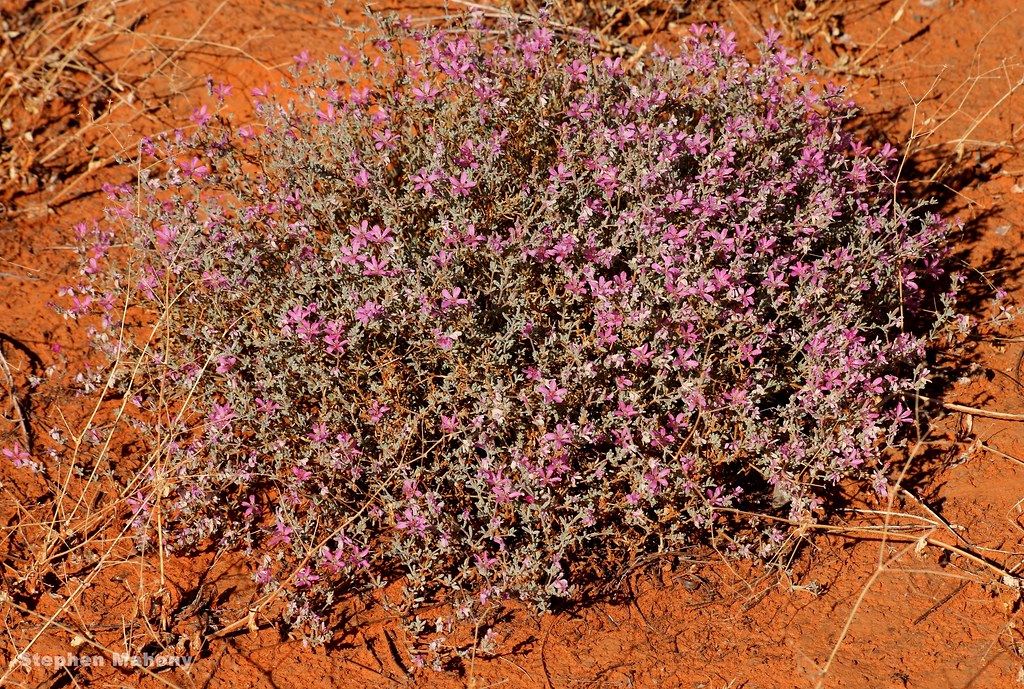
Purple Bush by Stephen Mahony, on Flickr
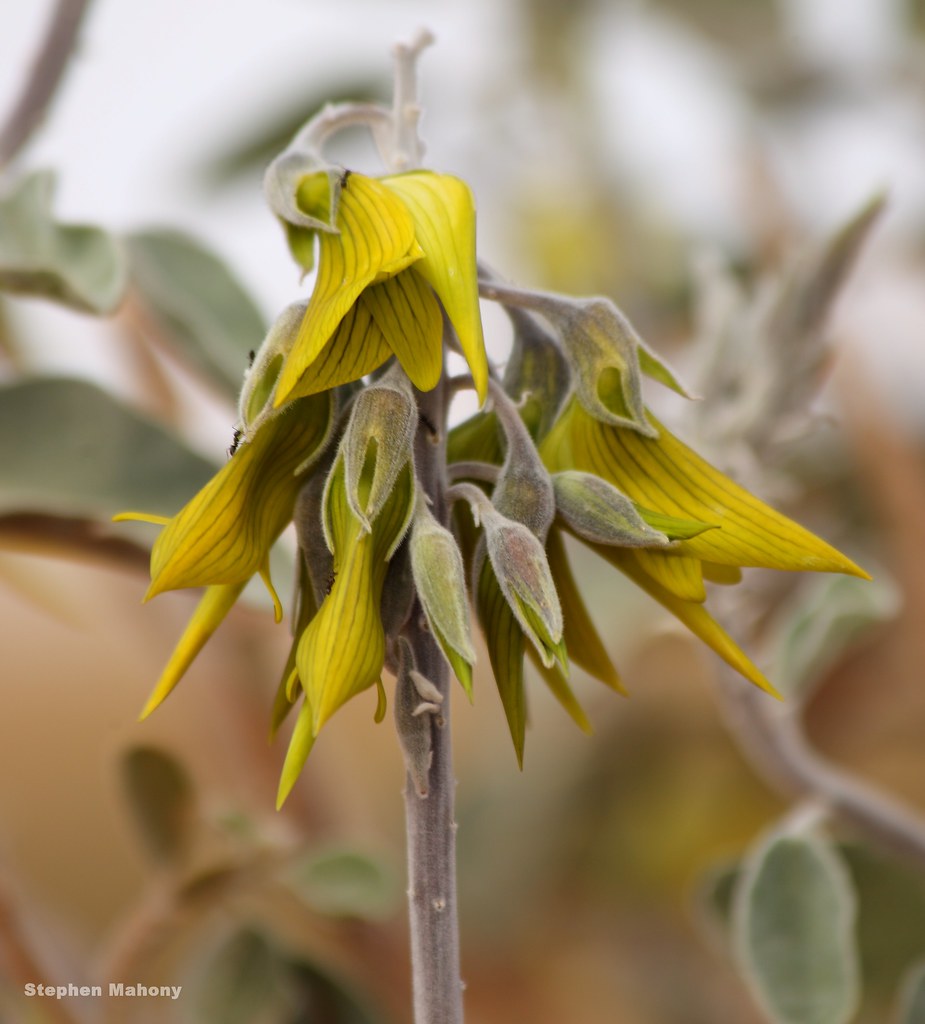
Green Bird Pea by Stephen Mahony, on Flickr
Hope you enjoy the thread.
Fortunately over the past couple weeks I managed to escape some of winter. These are some finds from the Simpson Desert of far western Qld.
Disclaimer: It is is illegal to handle native wildlife without a permit. This thread shows one native mammal being held. This individual is being held not by me, but by someone holding the appropriate permits for scientific reasons.
I don't know how many of you have driven from Sydney to the Simpson Desert before, but let me tell you it's not a short drive. And at this time of the year it's not a particularly interesting one either. The only reptile found on the trip up was this Common Dwarf Skink.

Menetia greyii by Stephen Mahony, on Flickr
After arriving in the Desert and setting up camp things began to improve. Day time temperatures were in the mid 30Cs with nights being a pleasant 10-15C. This led to plenty of day time reptile activity with Central Military Dragons being the most common reptiles around.

Ctenophorus isolepis by Stephen Mahony, on Flickr

Ctenophorus isolepis by Stephen Mahony, on Flickr

Ctenophorus isolepis by Stephen Mahony, on Flickr
Another common reptile around the dunes was the Leopard Ctenotus, an attractive but fairly fast larger skink which are quite attractive.

Ctenotus pantherinus by Stephen Mahony, on Flickr

Ctenotus pantherinus by Stephen Mahony, on Flickr

Ctenotus pantherinus by Stephen Mahony, on Flickr
Poking around didn't take too long to turn up one of these sand-swimming skinks, which were common in many habitats we looked at.

Lerista labialis by Stephen Mahony, on Flickr

Lerista labialis by Stephen Mahony, on Flickr
After the first day I was pretty happy with the reptiles we had managed to see, and keen to head out for dusk to check whether I might be equally lucky with geckos. While the night was warm enough to walk around without a jumper, there was no gecko activity. In fact the first 3 nights passed without a single gecko of any kind.
The next day followed the trend of little interesting finds. The other group managed to see a Moloch which I missed out on as well as some interesting skinks. My group turned up a scorpion.

Lychas Scorpion by Stephen Mahony, on Flickr
Fortunately after that un-eventful night the next day began to produce some more reptiles again.
Narrow-lined Ctenotus were seen in only small numbers, unfortunate seeing as how attractive they were.

Ctenotus dux by Stephen Mahony, on Flickr
Ctenophorus nuchalis started emerging in the heat of the day to sit outside of their burrows, the temps weren't feeling much like winter at all.

Ctenophorus nuchalis by Stephen Mahony, on Flickr

Ctenophorus nuchalis by Stephen Mahony, on Flickr
The next day was less productive, but still yielded one reptile I had been very keen to see for a while now, the Canegrass Dragon.

Diporiphora winnekei by Stephen Mahony, on Flickr

Diporiphora winnekei by Stephen Mahony, on Flickr

Diporiphora winnekei by Stephen Mahony, on Flickr

Diporiphora winnekei by Stephen Mahony, on Flickr
Finally after 3 nights of nothing I broke the streak and managed to find a single gecko on the dunes at night.
I had seen Northern Spiny-tails before, but always find them quite attractive.

Strophurus ciliaris by Stephen Mahony, on Flickr
While the next few days were uninteresting for reptiles the next 2 nights started producing geckos.
Beaked Geckos were easily the most common species running around the lower dunes. They are usually pretty hard to photograph, but I feel I finally got one pic to be happy with.

Rhynchoedura eyrensis by Stephen Mahony, on Flickr
Bynoe's Geckos were also around if one inspected areas with plenty of fallen wood or junk. They were a nice shade of red compared to other parts of their range.

Heteronotia binoei by Stephen Mahony, on Flickr
Ironically the gecko I encountered least commonly was the Variegated Dtella, usually the most common species in most places. They were still around and the first I found I optimistically thought might have been a Gehyra purpurascens, but no luck.

Gehyra variegata by Stephen Mahony, on Flickr
The best gecko over these few nights was the Sand-plain Gecko, the only new gecko for me on the trip, and one I've wanted to see for a fairly long time which has always avoided me.
First came a little bub.

Lucasium stenodactylum by Stephen Mahony, on Flickr
Then and adult.

Lucasium stenodactylum by Stephen Mahony, on Flickr

Lucasium stenodactylum by Stephen Mahony, on Flickr
The next day was the best of the trip, first off a Mulgara was caught in a pit trap by some of the researchers and we got to see it. This was my favourite animal of the whole trip.
For those truly reptile-centrics my excitement at this may seem 'odd'. Mulgara (this being the Brush-tailed, one of 2 species) are carnivorous marsupials of the Dasyurid family. Within the family only Quolls and Tassie Devils are larger, both of which have quite different morphology to the main radiation of Dasyurids which are generally a lot smaller. So the Mulgara is effectively the largest Dasyurid predator within the radiation of conservative morphology!
^ The above was mumbo jumbo? They are super freaking cute little wrecking balls that will take on anything!!!
Being held by one of the researchers.

Dasycercus blythi_017 by Stephen Mahony, on Flickr
It didn't sit still when released.

Dasycercus blythi_044 by Stephen Mahony, on Flickr
Not long after this Mulgara I went to sit under a shady tree and drink some water. After a couple minutes I realized this little guy was staring at me.

Moloch horridus by Stephen Mahony, on Flickr

Moloch horridus by Stephen Mahony, on Flickr

Moloch horridus by Stephen Mahony, on Flickr

Moloch horridus by Stephen Mahony, on Flickr

Moloch horridus by Stephen Mahony, on Flickr
After this day the trip began to wind up a fair bit. One day was spent driving into the Northern Territory and we managed to find a Gibber Earless Dragon.

Tympanocryptis intima by Stephen Mahony, on Flickr

Tympanocryptis intima by Stephen Mahony, on Flickr
But after this most of the animals that turned up I had already photographed earlier on the trip, and it wasn't long before it came to an end and we headed home.
That's the end of the reptiles but here's some scenery.
View from my tent.

Spinifex Plain by Stephen Mahony, on Flickr
A Gidgee Swail from on top of the dune.

Gidgee Swail by Stephen Mahony, on Flickr
One of many sand dunes.

Sand Dune by Stephen Mahony, on Flickr
From the top of a dune.

Dune Top by Stephen Mahony, on Flickr
A swail with hard rocky ground and Gidgee

Stony Gidgee Stand by Stephen Mahony, on Flickr
Spinifex Plain in the swail.

Spinifex Plain by Stephen Mahony, on Flickr
A swail with mixed Gidgee and Spinifex.

Gidgee and Spinifex Swail by Stephen Mahony, on Flickr
Sunset

Sunset on the Simpson by Stephen Mahony, on Flickr
Plants

Purple Pea by Stephen Mahony, on Flickr

Purple Pea by Stephen Mahony, on Flickr

Fried Egg Daisy by Stephen Mahony, on Flickr

Little White Flower by Stephen Mahony, on Flickr

Yellow Flower by Stephen Mahony, on Flickr

Purple Bush by Stephen Mahony, on Flickr

Green Bird Pea by Stephen Mahony, on Flickr
Hope you enjoy the thread.



